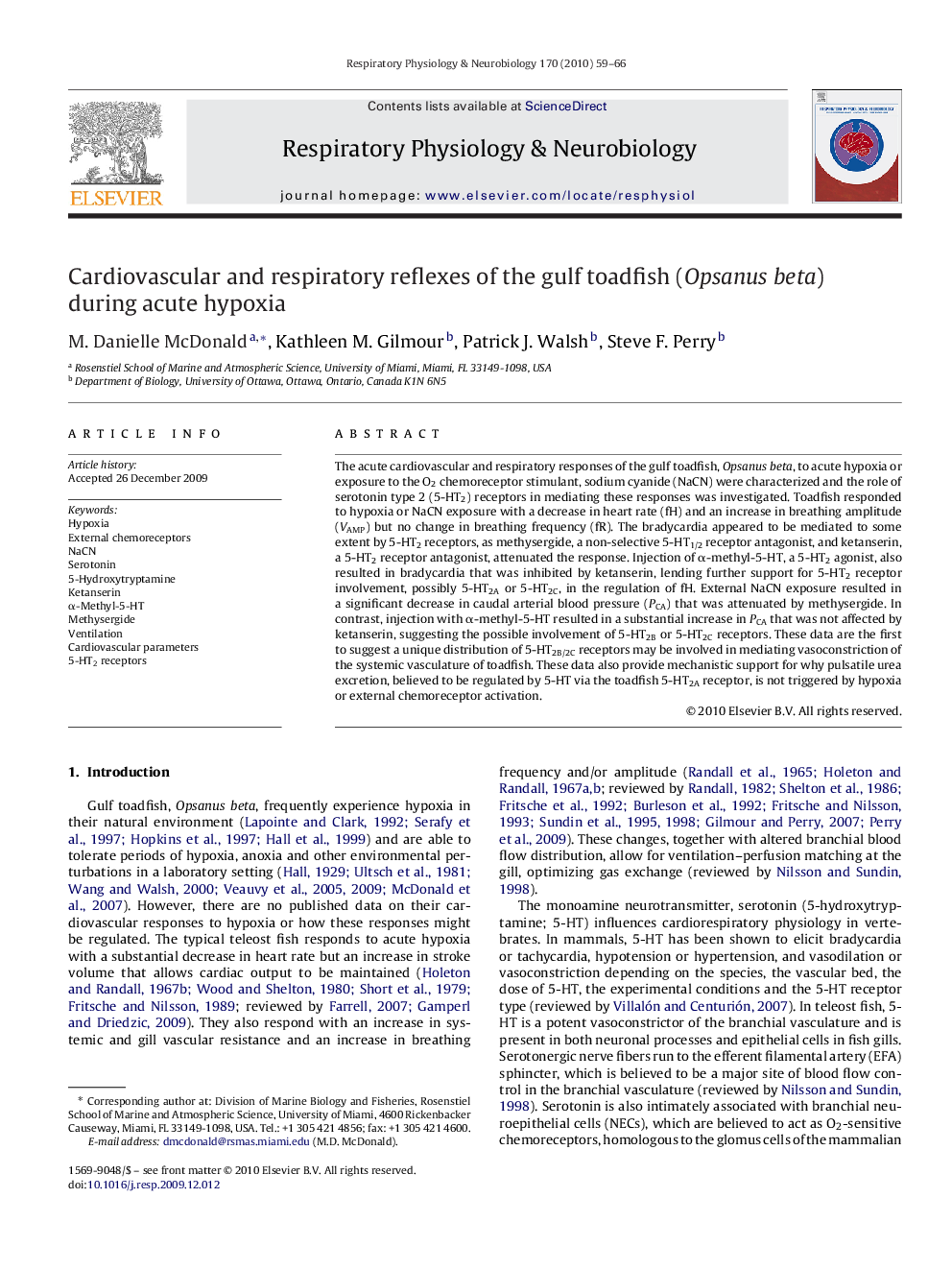| Article ID | Journal | Published Year | Pages | File Type |
|---|---|---|---|---|
| 5926638 | Respiratory Physiology & Neurobiology | 2010 | 8 Pages |
Abstract
The acute cardiovascular and respiratory responses of the gulf toadfish, Opsanus beta, to acute hypoxia or exposure to the O2 chemoreceptor stimulant, sodium cyanide (NaCN) were characterized and the role of serotonin type 2 (5-HT2) receptors in mediating these responses was investigated. Toadfish responded to hypoxia or NaCN exposure with a decrease in heart rate (fH) and an increase in breathing amplitude (VAMP) but no change in breathing frequency (fR). The bradycardia appeared to be mediated to some extent by 5-HT2 receptors, as methysergide, a non-selective 5-HT1/2 receptor antagonist, and ketanserin, a 5-HT2 receptor antagonist, attenuated the response. Injection of α-methyl-5-HT, a 5-HT2 agonist, also resulted in bradycardia that was inhibited by ketanserin, lending further support for 5-HT2 receptor involvement, possibly 5-HT2A or 5-HT2C, in the regulation of fH. External NaCN exposure resulted in a significant decrease in caudal arterial blood pressure (PCA) that was attenuated by methysergide. In contrast, injection with α-methyl-5-HT resulted in a substantial increase in PCA that was not affected by ketanserin, suggesting the possible involvement of 5-HT2B or 5-HT2C receptors. These data are the first to suggest a unique distribution of 5-HT2B/2C receptors may be involved in mediating vasoconstriction of the systemic vasculature of toadfish. These data also provide mechanistic support for why pulsatile urea excretion, believed to be regulated by 5-HT via the toadfish 5-HT2A receptor, is not triggered by hypoxia or external chemoreceptor activation.
Keywords
Related Topics
Life Sciences
Biochemistry, Genetics and Molecular Biology
Physiology
Authors
M. Danielle McDonald, Kathleen M. Gilmour, Patrick J. Walsh, Steve F. Perry,
